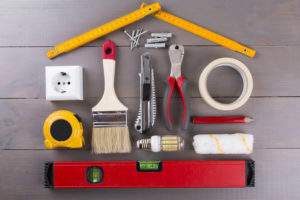 When it comes to home repairs, many of us see a problem and immediately think to call a professional. However, while professionals can definitely assist in home maintenance, and they’re certainly important when it comes to disasters, you can just as easily fix the small maintenance problems around your home yourself.
When it comes to home repairs, many of us see a problem and immediately think to call a professional. However, while professionals can definitely assist in home maintenance, and they’re certainly important when it comes to disasters, you can just as easily fix the small maintenance problems around your home yourself.
Whether it’s the door, tile, or plumbing, all you need for a quick fix is a few tools and some elbow grease. Here are some home maintenance problems that you can fix up without needing to call a professional:
- Door difficultiesWith a rotary tool or other attachment, you can fix a door that’s been difficult to open or has been routinely squeaking when it’s opened or closed. Consider shaving off the edge of the door that’s causing it to stick with a Dremel XPR. And to get rid of squeaking, use some petroleum jelly and gently rub it along the hinges of the door.
- GroutIf you need to fix and replace tile, you can simply use a grout-removal tool, rotary tool, or your bare hands to dig out the grout from under the tile. Once all of the grout has been removed over a couple of hours, you can easily replace it before setting your tiles back the way they were or in any pattern that you like.
- ToiletIf your toilet is having difficulty flushing it may be the result of holes located under the toilet’s rim. Sediment and calcium deposits in your toilet’s plumbing system could be clogging the holes of the toilet’s rim and therefore causing the toilet to have problems flushing. In order to fix the problem by yourself, use an old toothbrush or any other small brush with particularly stiff bristles to clean the sediment and calcium from the holes. This should help your toilet flush remarkably better.
- PlumbingWhen there’s a leak in your plumbing, your first thought may be to call a professional. However, with plumbing you can also often fix the problem by yourself. Start by turning off your water supply so you don’t get sprayed during the process of fixing the problem. Let the pipe drain completely and then wipe the area so it’s good and dry.
Once the area is dry, you can use a reliable clamp such as a screw hose clamp and sheet rubber to cover the leak like a bandage. Screw hose clamps can be used to fix damaged or leaking pipes, but typically only in emergency situations.
However, because there are many types of hose clamps (hose clamps are often available in a myriad of materials and sizes), be sure you’re using the right hose clamp sizes and that they’re stainless steel clamps. A reliable clamp made of steel will prevent it from rusting onto the pipe, which may make fixing the problem more difficult in the future.
There are many home maintenance projects that you can do yourself to save a few bucks. So before calling a professional, make sure the problem on your hands can’t easily be fixed by yourself.

